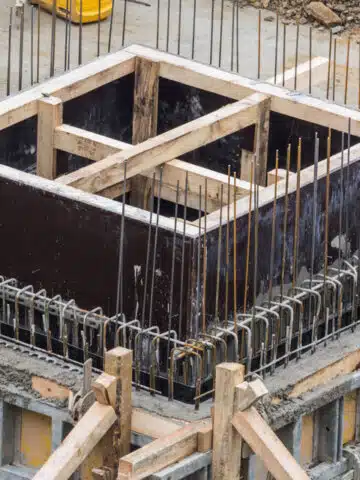Blog
A Guide To Protecting Your Foundation Walls From Water Damage
In the realm of building maintenance and preservation, one cannot stress enough the importance of protecting foundation walls. A building, no matter how splendidly constructed, is only as strong as its foundation. It is because the base of any building stands upon the material used to build it and ultimately that material makes the foundation of the building look stronger. The Water, with its persistent and invasive nature, can compromise this very foundation. For those involved or interested in commercial construction services, understanding the intricacies of safeguarding foundations is indispensable.
Recognizing the Warning Signs
The cornerstone of effective foundation protection lies in the early detection of issues. As with many structural concerns, water damage is a gradually developing problem, rather than an abrupt occurrence. Recognizing early signs can act as the first line of defense against escalating damages and costly repairs. While some indications like visible cracks in walls or floors are easy to spot, others might be more subtle.
For instance, mold or mildew formation, though seemingly minor, can be an early warning of moisture accumulation. Damp spots or persistent musty odors can similarly point towards underlying water intrusion. Furthermore, if doors or windows start sticking, it might be a sign of foundation shifting due to moisture issues. Leveraging the expertise of professionals in commercial construction services can be invaluable here. These experts have a keen eye for such signs and can not only detect them early but also advise on the best preventive measures to implement.
Proper Landscaping
Landscaping, often viewed through the lens of aesthetics, plays a surprisingly significant role in safeguarding foundation walls. The design and layout of your properties’ immediate surroundings can either facilitate water runoff or contribute to water accumulation. For example, ensuring the terrain around your building slopes away from the foundation is crucial. This gradient prevents water from stagnating around the base of the building, reducing the risk of seepage.
Another aspect to consider is vegetation. While trees and large shrubs add beauty to a property, their root systems, if planted too close to the foundation, can disrupt its integrity. Roots might grow into cracks and exacerbate them, leading to more significant water ingress issues. On the other hand, strategic plant placements can aid in soil retention and moisture control. Proper landscaping, therefore, becomes a balancing act between aesthetics, utility, and protection. When unsure, consulting with commercial construction services, particularly those with landscaping expertise, can offer the best guidance in creating a functional and protective green space around your property.
Utilizing Quality Drainage Systems
Drainage is your foundation’s best friend. Incorporating efficient drainage systems, such as French drains, gutter downspouts, or sump pumps, can be highly effective in channeling water away from your foundation. Water, if left unchecked, follows the path of least resistance, which might lead it straight into the foundation. By providing it with a designated path away from your property, you’re safeguarding against potential damage.
Regular Maintenance and Inspection
Routine checks, especially after a heavy rainstorm or snowmelt, can be invaluable. Over time, even the best protective measures can become compromised. By scheduling regular inspections, either personally or through commercial construction services, you can ensure that the protective mechanisms in place remain functional. Additionally, these inspections can also uncover new vulnerabilities that might have arisen due to changing environmental factors or simple wear and tear.
Waterproofing Solutions
There are several waterproofing solutions available that can be applied directly to the foundation walls. These solutions create a barrier, preventing water from seeping into the foundation material. They can be applied externally or internally, depending on the specific requirements of the structure and the level of protection needed. Consulting with professionals who specialize in commercial construction services will provide insights into the most effective waterproofing techniques for your specific situation.
Understanding the Role of Soil
The type of soil around your foundation can either be a boon or a bane. Clay Rich soils, for example, tend to retain more water, potentially causing hydrostatic pressure against the foundation walls. Sandy soils, on the other hand, offer better drainage. By understanding the soil composition around your property, you can take tailored measures to either improve drainage or to buffer your foundation against potential water pressure.
The foundation is arguably the most crucial part of any structure. As the adage goes, “A stitch in time saves nine.” By investing time and resources into protecting foundation walls now, property owners can avoid substantial costs and headaches in the future. Whether you’re considering DIY solutions or seeking the expertise of commercial construction services, being proactive is the key to a robust and long lasting foundation.





